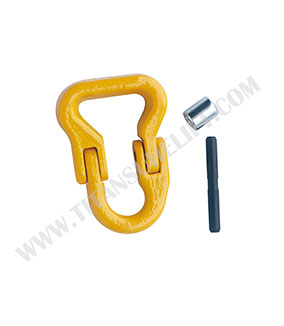What is a chain hoist?
A chain hoist is a mechanical device used to lift heavy objects and equipment. It consists of a pulley connected by a closed chain, forming a closed loop which is easy to pull by hand.
There are several large and small pulleys on the chain hoist. A large pulley and a small pulley are on the same axis, and a movable pulley secures the load in the proper position.
To lift the load with a chain hoist, the enclosed chain must be pulled. When it is pulled, more chain is released from the large pulley than from the small pulley. The lifting process begins from there. Although the history of pulleys is unclear, the primitive method was used to move heavy objects. One of the early attempts of the pulley system, a single fixed pulley, failed because friction prevented the wheel from turning. Rope pulleys, usually used for drawing water from a well, are still in use and are considered the next invention.
The Origin of Chain Hoist
In the early 3rd century BC, the Greek inventor Archimedes invented a designed pulley system to pull the ship out of the sea. It was accomplished using a special pulley group and hoist system that is still in use today.
There are three types of chain hoists: pneumatic, manual, and electric.
Manual and pneumatic hoists are designed with reduction gears, hook pivots, and rotating devices on the hoist. These devices hang from a top hook or are suspended by a pusher or gear car and move objects slowly and carefully when adjusting height. The additional load is securely fixed, so it can be maintained without much supervision.
On the other hand, the electric chain hoist, which is generally used to lift heavy industrial loads, allows users to pull horizontally and vertically.
What is an electric chain hoist?
An electric chain hoist is a device used to lift heavy objects. The chain is powered by an electric motor that drives a set of gears placed between the gears of the electric chain hoist. When the motor is started and the gears are turned, the chain is pulled up or down according to the direction of the motor. In some models of electric chain hoists, a pair of pulley-like devices (called reverse chain devices) are connected to the hoist motor, allowing the hoist motor to lift very heavy objects with little force.
The difference between a typical hoist and an electric chain hoist is that the cable can be wound on a reel, but the chain cannot. An electric chain hoist requires a chain that is equal in length to the length of the chain with a hook attached to the back of the hoist. This extra chain allows the hook end to lower to the ground while keeping the chain links engaged with the hoist drive. As the hook and the object being lifted ascend, the extra chain will drop to the ground. In this design, some hoists actually have a hook at each end of the chain, so the hoist can be used regardless of which end of the chain is available.
By adding a reverse chain to the electric chain hoist, the problem of loose chain at the end of the chain is eliminated, and the lifting capacity of the hoist is greatly increased. The reverse chain is very similar to the pulleys and hoists used in the design of rope elevators, except that the chain replaces the rope. Unlike pulleys and hoists, electric chain hoists equipped with reverse chain devices are not recommended for horizontal traction. As the chain falls horizontally, the weight of the chain may cause serious tangle problems, which can damage the efficiency of the electric chain hoist.
The hoist is usually connected to a set of steel casters or wheels, which are mounted on a trolley system or I-beam. As long as the hoist can receive power, it can be used to lift and transport heavy objects through the building and even transport heavy objects to external loading docks. Typically, a retractable power line or sliding electrical connector is used to allow the electric chain hoist to move throughout the building. Chain hoists come in a variety of sizes, each with a specific lifting capacity.







































